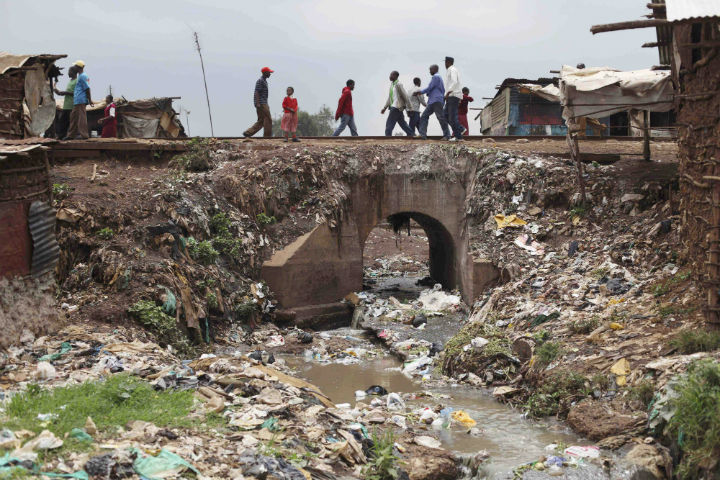VANCOUVER – Imagine having to spend two and a half days trying to find a private place to go to the toilet, except that the only washroom is a bush or a hole in the ground.

That’s a reality for a significant portion of Kenya’s population.
Kenya’s National Bureau of Statistics said in a new report that more than 40 per cent of the country’s population uses uncovered pit latrines, bushes, buckets or other means, such as plastic bags, to relieve themselves.
And those without a standard facility, ones like those readily available to nearly 90 per cent of people living in capitol city Nairobi, spend almost 2.5 days worth of time each year looking for a private place to go.
In the worst-ranked county, Wajir, only 6.7 per cent of the population has access to improved sanitation, which also includes proper facilities to dispose of garbage and other household waste.
According to the report, titled Pulling Apart or Pooling Together? Exploring Kenya’s Inequality, 39 per cent of Kenya’s 44 million people are disadvantaged when it comes to access to improved waste disposal.
While 61 per cent of the country does have access to what the report calls improved sanitation, only 5.9 per cent of the population uses a facility that is connected to a main sewer, meaning they have a proper toilet in their house, Kenya’s Daily Nation reported.
It’s a major cause for concern when it comes to the risk to health and cost of caring for those affected by illness caused by poor sanitation.
“Lack of access to safe human waste disposal facilities leads to higher costs to the community through pollution of rivers, ground water and higher incidence of air and water borne diseases,” the report said.
The Daily Nation reported Tuesday the government spends only 0.5 per cent of its income on sanitation.
The Statistics Bureau report comes a week after the world marked the first-ever World Toilet Day — a UN-designated day to push for better access to proper sanitation and put an end to “open-air defecation.”
According to London School of Hygiene and Tropical Medicine study, titled Toilets for Health, one billion people around the world defecate in open spaces.
Associated illnesses include diarrhoeal diseases such as cholera, typhoid and amoebic dysentery.
In Kenya, those diseases, combined with the loss of productive time people spent finding a private space, cost the government an estimated 27 billion Kenyan shillings ($327.5 million CAD) a year, the World Bank said in 2012.
The human cost amounted to nearly 20,000 deaths a year in Kenya, most of them children, the World Bank stated in the 2012 report.




Comments